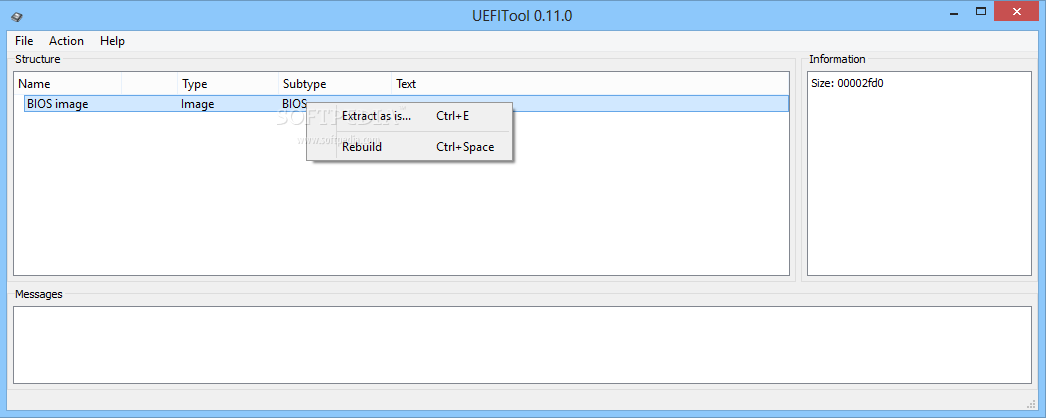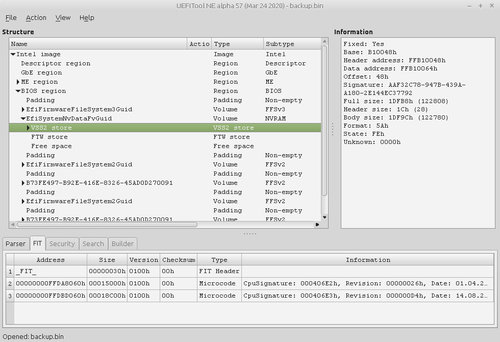


UEFITOOL ADD UEFI SHELL TO BIOS DRIVER
In both cases the NVMe Controller used the NVMe driver v2. Since I wanted not only to know, whether your “small” NVMe EFI module works at all, but also, whether there is any performance difference between the “small” and the much bigger NvmExpressDxe_3 module, I have done some benchmark tests with both BIOS module variants. Thank you very much for your work and congratulations for the quality of it! PCIe slot of my ASUS P8Z68-V system.Īfter having flashed the modded BIOS, where I had inserted your NvmExpressDxe_Small.ffs instead of the previously inserted NvmExpressDxe_3.ffs, I just customized the BIOS settings within the “BOOT” section and started the PC. The SSD was running on my Z170 system before and I simply removed the M.2 SSD from the other system, put it into an M.2>PCIe adapter and inserted it into the 1. Meanwhile I have tested your “small” NvmExpressDxe module with my Z68 chipset system running Win10 圆4 v1803 on a Samsung 960 EVO SSD. Launching this option will launch the UEFI Shell for you.Please let me know when you had a chance to test the driver functionality. This USB should come up in the firmwareīoot menu. Note: If you are unable to launch UEFI Shell from the firmwareĭirectly, create a FAT32 USB pen drive with Shell.efi copied as Just using help produces a list of all available shell commands. Help text for the shell is accessed by typing help utilname. This can be tested by putting the shell on a FAT32 file system (USB stick, hard drive partition), renamed as /efi/boot/boot圆4.efi and then booting to it, from your BIOS. The EFI shell binary is compiled to run independent of the firmware. OVMF package to generate a 圆4 version) - Inclusion of UEFI shell in Linux distro iso. You can also rebuild aĬustom shell using the ShellPkg (build standalone or include it in the UEFI Shell 2.0 (supports the most commands). I recommend the newer ShellBinPkg, using the "full shell" profile of It does seem possible to use/access a Phoenix compatible EFI shell, using the open-source (BSD) TianoCore edk2/ShellPkg (source) and edk2/ShellBinPkg (binary) packages ( GIT Repo).

From what I've read, UEFI isn't directly usable (possibly via a hidden menu etc., which might require a BIOS mod). If what I've understood is correct, the Dell has some form of locked-down Phoenix SecureCore Tiano UEFI 'BIOS'. I've just bought a Dell XPS 17 (l702x) and I'm interested in multi-booting a variety of OSes. If you're trying to force an EFI-mode boot, my rEFInd, and in particular its bootable CD version, may be helpful it boots only in EFI mode, and as configured, it will act as a boot manager for other EFI-based boots, but not for BIOS-mode boots. This may require re-mastering a CD or (more easily) carefully selecting a CD. When booting removable media, the rules may be different, but you can often give it a kick in the right direction by providing just one boot mode.

You may be able to find a clue about what your firmware is doing by reading the manual. Too often, though, the firmware gives the user little or no explicit control of the matter instead, the firmware attempts to infer the correct boot mode based on the state of the hard disk - for instance, it might use EFI mode if a GPT is detected and BIOS mode if an MBR is found or it might use EFI mode if an EFI System Partition (ESP) is found and BIOS mode if not. BIOS), except of course for EFI-only implementations without BIOS support. EFI implementations must provide some way to control the boot mode (EFI vs.


 0 kommentar(er)
0 kommentar(er)
